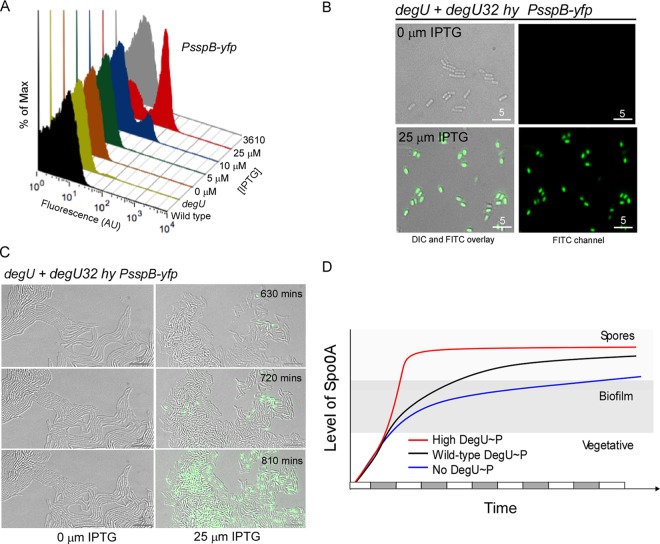FIG 7.
High levels of DegU∼P promote sporulation. (A) Flow cytometry analysis of NRS4269 (3610 lacA::PsspB-yfp), NRS4265 (degU lacA::PsspB-yfp), and NRS4266 [degU P(Hy)-spank-degU32(Hy)-lacI lacA::PsspB-yfp] cells grown under biofilm formation conditions for 17 h. Cells were grown in the presence or absence of IPTG, as indicated. (B) DIC and fluorescence (YFP) microscopy images of NRS4266 cells analyzed in the experiments whose results are shown in panel A. (C) Representative still frames (DIC and YFP channel) taken from time-lapse movies are presented for strain NRS4266 in the presence and absence of IPTG. The progression from top to bottom is with respect to time. (D) A model predicting the influence of DegU∼P on the level of Spo0A∼P over time. The x axis represents time, and the gray and white bars along the x axis represent cell division events. Black line, wild type; blue line, degU mutant; red line, the presence of high levels of DegU∼P. The level of Spo0A∼P is on the y axis, and the theoretical threshold levels of Spo0A∼P needed to activate matrix production and sporulation are indicated.

